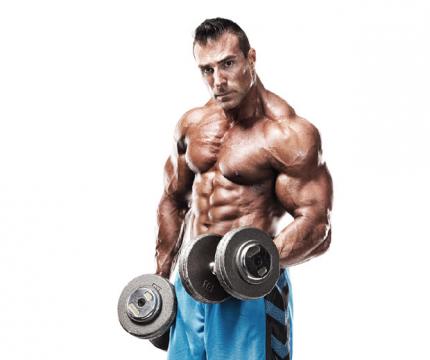Muscle Talk

Jaime Filer graduated with a kinesiology degree from York University, where she was a varsity athlete. She’s also a former competitive bodybuilder who competed in drug-tested events throughout North America. If something new is trending in fitness, chances are Jaime’s already tried it!

Long workouts steroids and Ginger
HEALTH ZONE
Extended sets for better gains
The old question of training with low reps and high weight or high reps and low weight has been debated in gyms since time immemorial. It’s already been established that sets of 60 percent of your one-rep max (1RM) can increase your growth hormone production (because of lactic acid), so researchers wanted to know if topping off a set from the strength-based training program (90 percent of 1RM) with that type of lighter weight set would enhance GH production even more. After four weeks of training, scientists noted that finishing off each strength workout with a longer set leads to an increase in the 1RM, increased size of leg muscle, and, immediately after the workout, an increase in GH synthesis. With this new info, consider adding drop sets or high reps/low weight to the end of your regular heavy strength sessions.

The trifecta of evil: steroids, creatine, and high-protein diets
All right, so they don’t sound evil, but boy oh boy, if you’re a researcher at Hawler College of Medicine, they are the bane of your existence. They managed to find bodybuilders who were willing to admit they used injectable steroids but also happened to be on high-protein diets and using creatine. “There is concern that excess dietary protein and creatine that is not accompanied by increased fluid intake may lead to a relative hypovolemia (decreased blood volume),” the researchers wrote. The trifecta, in the absence of enough water intake, led to high creatinine (a by-product of creatine breakdown) levels and low kidney filtration rate. So please, if you’re a hard-training athlete using any combination of the three “evils,” make sure you keep drinking water.

The powder alternative to pill popping
People use NSAIDs, anti-inflammatories, glutamine, and everything else under the sun to help with pain and delaying muscle soreness after a workout. There’s currently a large push in North America towards more Eastern-type medicine versus Western drugs, which brings us to the meta-study done by a researcher through the Global Neuroscience Initiative foundation. He collected the data from eight studies that looked at the analgesic effects of turmeric and ginger, and noted that the plants inhibited inflammatory reaction, and didn’t allow the enzymes that play a role in pain stimulation to take effect. Ginger and turmeric reduced not only DOMS but also the pain caused by arthritis. If you train hard, consider taking up to 4 grams a day of ginger and 1 to 3 grams a day of turmeric.

